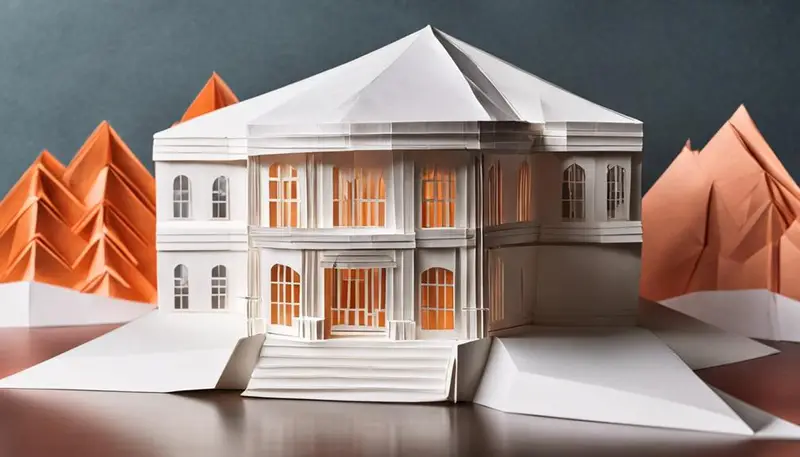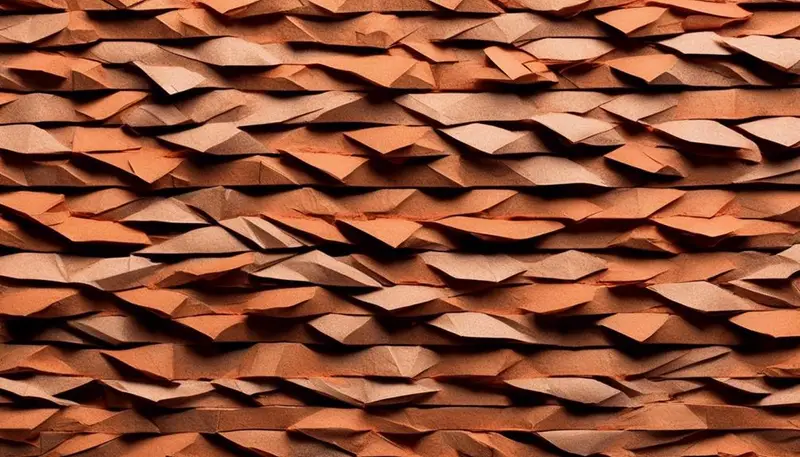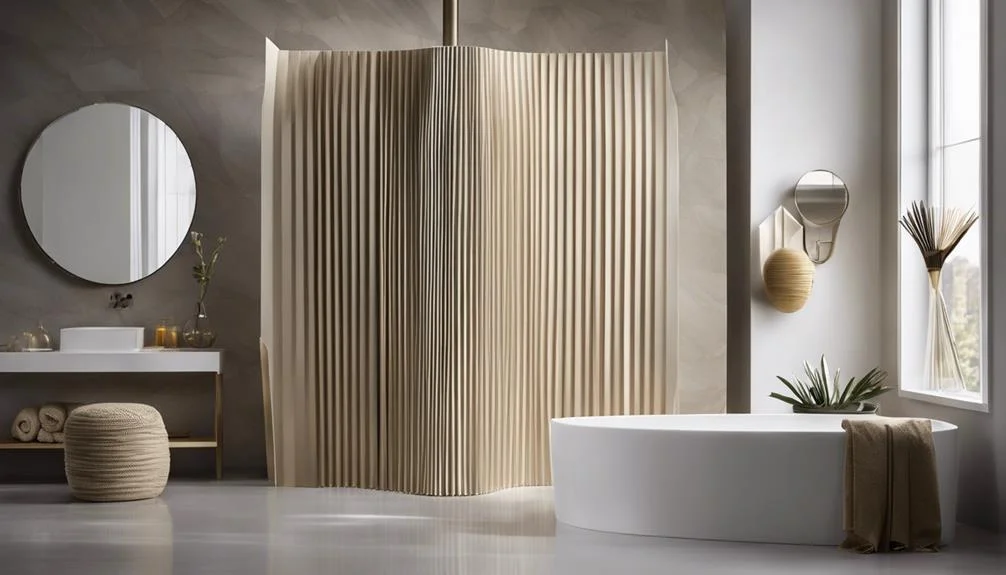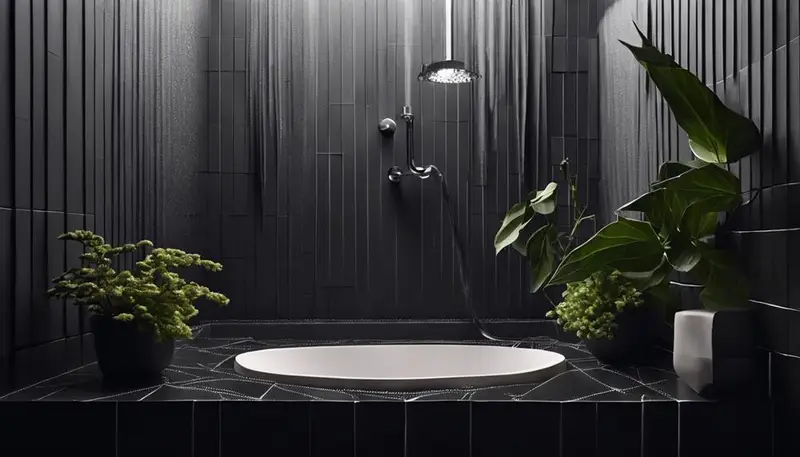Dutch lap siding offers a classic look with clean lines and durability, enhancing property value and curb appeal. The siding's customization options complement various architectural styles and require minimal upkeep, making it a practical choice for homeowners. However, gaps between boards can lead to water seepage and potential moisture issues, requiring regular maintenance and proper installation techniques. Understanding these benefits and drawbacks is vital when considering Dutch lap siding as an exterior cladding option. It's essential to weigh the pros and cons to make an informed decision for your home's aesthetic and longevity.
Takeaways
- Dutch lap siding offers timeless aesthetic appeal with clean lines and shadow lines.
- Proper installation and maintenance are crucial to prevent water infiltration and wood rot.
- Regular inspections and timely repairs help maintain the integrity of the siding.
- Maintenance like caulking gaps and repainting may be required for Dutch lap siding.
- Considering long-term maintenance costs and following manufacturer guidelines are essential for durability.
Classic and Timeless Appeal
Dutch lap siding offers a classic and timeless appeal that is revered for its traditional yet enduring aesthetic. This style of siding, characterized by its distinctive horizontal boards with a beveled edge creating a shadow line, has been a popular choice for homeowners seeking a charming and elegant look for their properties.
The clean lines and subtle shadowing effect of Dutch lap siding add depth and dimension to the exterior of a home, creating a sense of visual interest and architectural detail.
One of the key advantages of Dutch lap siding's classic appeal is its ability to complement various architectural styles, from Colonial and Cape Cod to Craftsman and Farmhouse designs. The versatility of Dutch lap siding allows it to seamlessly blend in with both historical and modern homes, enhancing their overall aesthetic appeal.
Additionally, the timeless nature of Dutch lap siding ensures that it will not go out of style, providing homeowners with a long-lasting and enduring exterior cladding option that can stand the test of time.
Enhanced Curb Appeal
Enhanced curb appeal through Dutch lap siding offers a combination of visual impact and durability, making it a popular choice among homeowners.
The versatility in design allows for customization that complements various architectural styles and preferences, further enhancing the overall aesthetic of the property.
This aspect of Dutch lap siding can notably elevate the exterior appearance of a home, attracting attention and increasing its overall value.
Visual Impact and Durability
When considering the visual impact and durability of Dutch lap siding, it is essential to evaluate its ability to enhance the overall curb appeal of a property. Dutch lap siding offers a classic and timeless look that can greatly boost the aesthetic appeal of a home or building. Additionally, its durability guarantees that the exterior remains attractive for years to come, making it a practical choice for homeowners looking for long-lasting solutions.
Enhanced Curb Appeal: Dutch lap siding's distinctive design adds depth and dimension to the exterior, creating a visually appealing facade.
Weather Resistance: The sturdy construction of Dutch lap siding provides protection against harsh weather conditions, such as heavy rain, strong winds, and extreme temperatures.
Low Maintenance: With minimal upkeep required, Dutch lap siding retains its appearance without the need for frequent painting or repairs, saving homeowners time and money in the long run.
Versatility in Design
The versatility in design of Dutch lap siding contributes greatly to the overall curb appeal of a property. Dutch lap siding offers a range of design options, making it a popular choice for homeowners looking to enhance the visual aesthetics of their homes.
One of the key features of Dutch lap siding is its ability to create depth and shadow lines on the exterior of a house, adding dimension and visual interest. This siding style can be used to achieve various architectural looks, from traditional to modern, depending on the width and spacing of the individual siding planks.
Furthermore, Dutch lap siding comes in a variety of colors and finishes, allowing homeowners to customize the look of their homes to suit their preferences. Whether aiming for a classic, rustic appearance or a more contemporary style, Dutch lap siding can be adapted to meet diverse design requirements.
Its versatility in design makes Dutch lap siding a versatile option for homeowners seeking to enhance their property's curb appeal while maintaining a stylish and durable exterior finish.
Easy Maintenance and Installation
Maintaining and installing Dutch lap siding is known for its simplicity and efficiency, making it a popular choice among homeowners and contractors alike.
- Easy Maintenance: Dutch lap siding requires minimal upkeep. Regular cleaning with a mild detergent and water can keep it looking fresh and vibrant. Additionally, the design of Dutch lap siding prevents water from seeping behind the panels, reducing the risk of moisture-related damage.
- Straightforward Installation: The overlapping design of Dutch lap siding makes installation relatively straightforward. Contractors can quickly install the siding by fitting each panel over the previous one, creating a tight seal that enhances the siding's durability and weather resistance.
- Time and Cost-Effective: Due to its ease of maintenance and installation, Dutch lap siding can save both time and money in the long run. Homeowners benefit from reduced maintenance costs and potentially lower installation expenses, making it an attractive option for those seeking a practical yet aesthetically pleasing siding solution.
Versatile Design Options
When considering Dutch lap siding, one of the key benefits to contemplate is its versatile design options.
From a wide array of color choices to its architectural flexibility, Dutch lap siding offers homeowners the opportunity to customize their exterior appearance to suit their preferences and complement their home's style.
These design options allow for creativity and personalization, making Dutch lap siding a popular choice for many homeowners.
Color Choices
Opt for a diverse range of hues to enhance the versatility of Dutch lap siding in your home's design. The color choices you make can have a notable impact on the overall aesthetic appeal and curb appeal of your property.
Here are three essential considerations when selecting colors for Dutch lap siding:
- Contrast: Choose colors that create a striking contrast with other elements of your home's exterior, such as trim, doors, and roof. This contrast can help highlight the architectural features and add visual interest to your property.
- Complement: Select colors that complement the surrounding landscape and architectural style of your home. Harmonizing the siding color with the natural elements or existing design elements can create a cohesive and polished look.
- Endurance: Opt for colors that are fade-resistant and durable to ensure the long-lasting quality of your siding. High-quality finishes can help preserve the vibrancy of the colors over time, reducing the need for frequent repainting or touch-ups.
Architectural Flexibility
Selecting Dutch lap siding provides homeowners with a range of architectural flexibility, offering versatile design options to enhance the overall look of their property. Dutch lap siding's unique profile creates a charming visual appeal that complements various architectural styles, from traditional to modern.
This siding style can be installed horizontally or vertically, allowing for customization based on the homeowner's preferences and the architectural requirements of the property.
One of the key advantages of Dutch lap siding is its ability to create depth and dimension on the exterior of a home. The overlapping horizontal or vertical panels create distinct shadow lines, adding visual interest and character to the building's facade.
Additionally, Dutch lap siding comes in a variety of widths, allowing for further customization and creativity in the design process.
Whether aiming for a timeless traditional look or a more contemporary aesthetic, Dutch lap siding offers a versatile canvas for homeowners to express their style and enhance the architectural appeal of their property.
Potential for Moisture Issues
Moisture issues can pose a significant challenge when considering the installation of Dutch lap siding. This traditional style of siding, with its overlapped horizontal boards, can be prone to moisture-related problems if not properly maintained or installed.
Some potential concerns include:
- Water Infiltration: Gaps between the siding boards can allow water to seep behind the siding, leading to potential water damage and mold growth.
- Rot and Decay: If moisture becomes trapped between the siding and the underlying structure, it can accelerate rotting of the wood, compromising the integrity of the siding and the building.
- Maintenance Requirements: Dutch lap siding may require more frequent maintenance, such as caulking gaps and repainting, to prevent moisture issues and ensure its longevity.
Proper installation techniques, regular inspections, and timely repairs are essential to mitigate the risk of moisture-related problems when opting for Dutch lap siding.
Cost Considerations
When evaluating Dutch lap siding for a project, it is vital to carefully assess the cost considerations associated with this type of siding. Dutch lap siding offers a classic and timeless look that can enhance the aesthetic appeal of a property. However, it is important to weigh the costs involved to determine if it aligns with your budget and long-term financial goals.
One of the primary cost considerations of Dutch lap siding is the initial investment. The cost of materials, installation, and any additional treatments or finishes can vary depending on the quality of the siding and the size of the project. It is advisable to obtain quotes from multiple suppliers and contractors to compare prices and make sure that you are getting the best value for your money.
Moreover, ongoing maintenance and repair expenses should also be taken into account. While Dutch lap siding is known for its durability, periodic maintenance such as painting or sealing may be required to preserve its appearance and protect it from the elements. Factoring in these potential costs can help you make an informed decision about whether Dutch lap siding is the right choice for your project.
Frequently Asked Questions
Can Dutch Lap Siding Be Painted Over Time?
Yes, Dutch lap siding can be painted over time to refresh its appearance or change its color. Proper surface preparation, primer application, and choice of quality paint are essential for a long-lasting finish.
Is Dutch Lap Siding Suitable for All Climates?
Dutch lap siding is generally suitable for various climates due to its durability and ability to withstand different weather conditions. Proper installation and maintenance are vital factors in ensuring its longevity and performance in any climate.
How Does Dutch Lap Siding Compare to Other Materials?
When comparing Dutch lap siding to other materials, factors such as durability, maintenance requirements, cost efficiency, and aesthetic appeal should be considered. Each material has its unique characteristics that may suit different preferences and needs.
Are There Eco-Friendly Options for Dutch Lap Siding?
When considering eco-friendly options for Dutch lap siding, look for materials such as reclaimed wood, fiber cement, or engineered wood that are sustainable, recyclable, or made from recycled content to minimize environmental impact.
What Are the Best Practices for Repairing Dutch Lap Siding?
Best practices for repairing Dutch lap siding involve evaluating damage extent, sourcing matching materials, removing damaged sections carefully, preparing surfaces, installing new pieces securely, sealing joints properly, and applying a fresh coat of paint for uniformity.
Conclusion
To sum up, Dutch lap siding offers a classic and timeless appeal with enhanced curb appeal and easy maintenance. Its versatile design options allow for various style choices.
However, potential moisture issues and cost considerations should be taken into account when considering this siding option.









